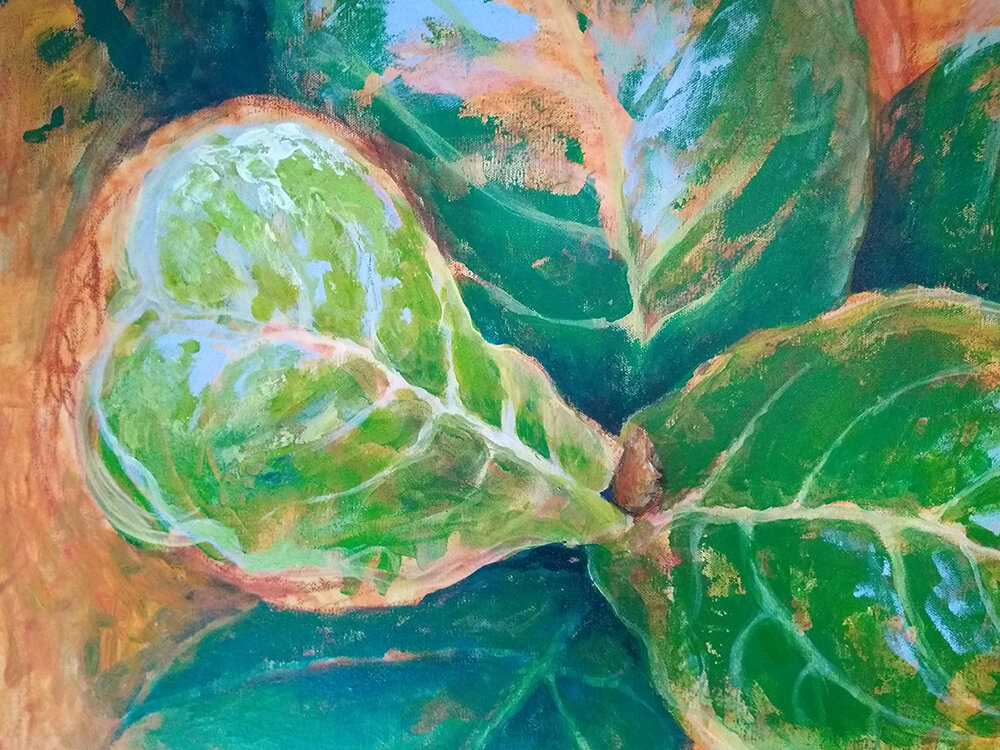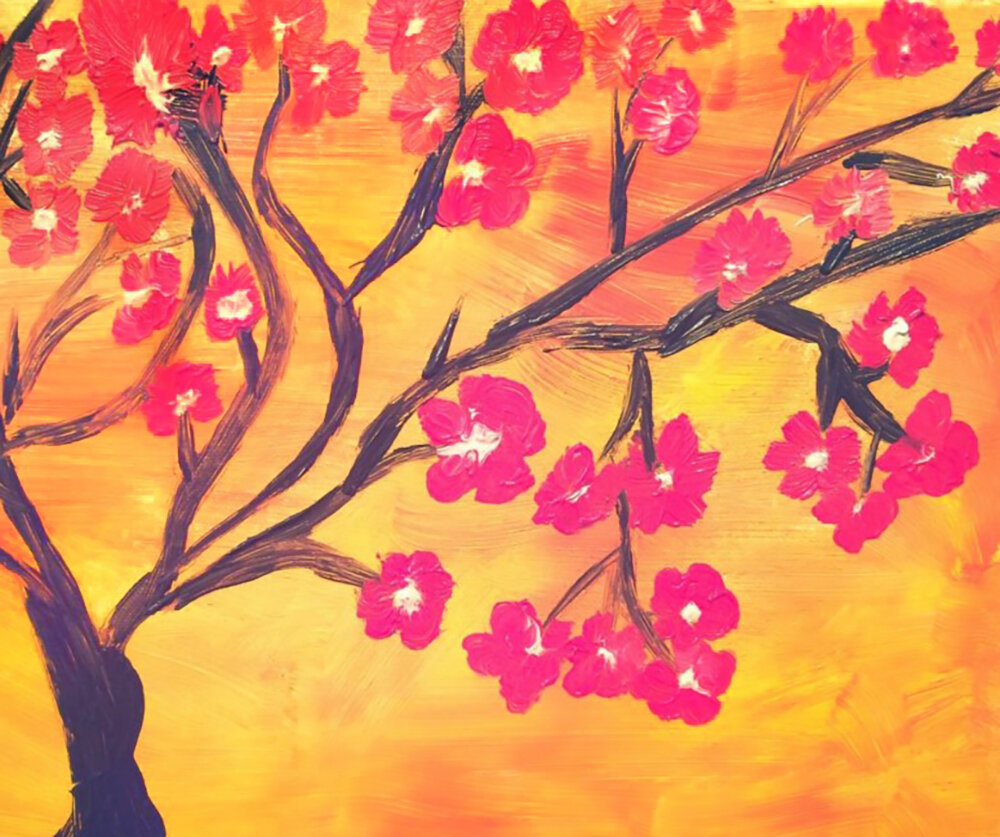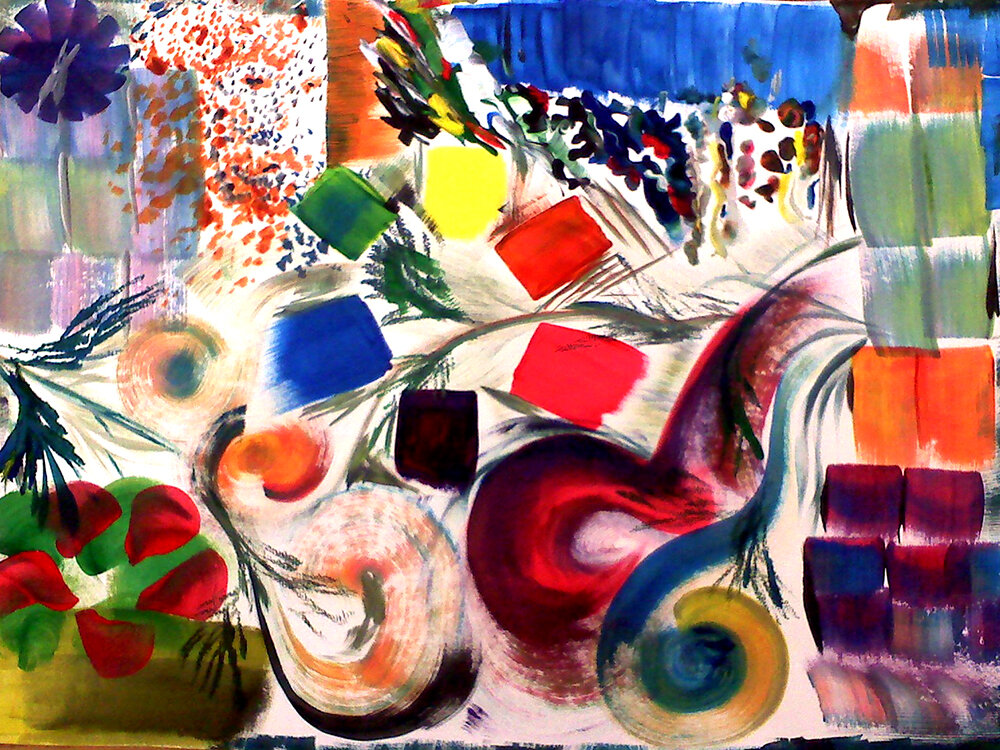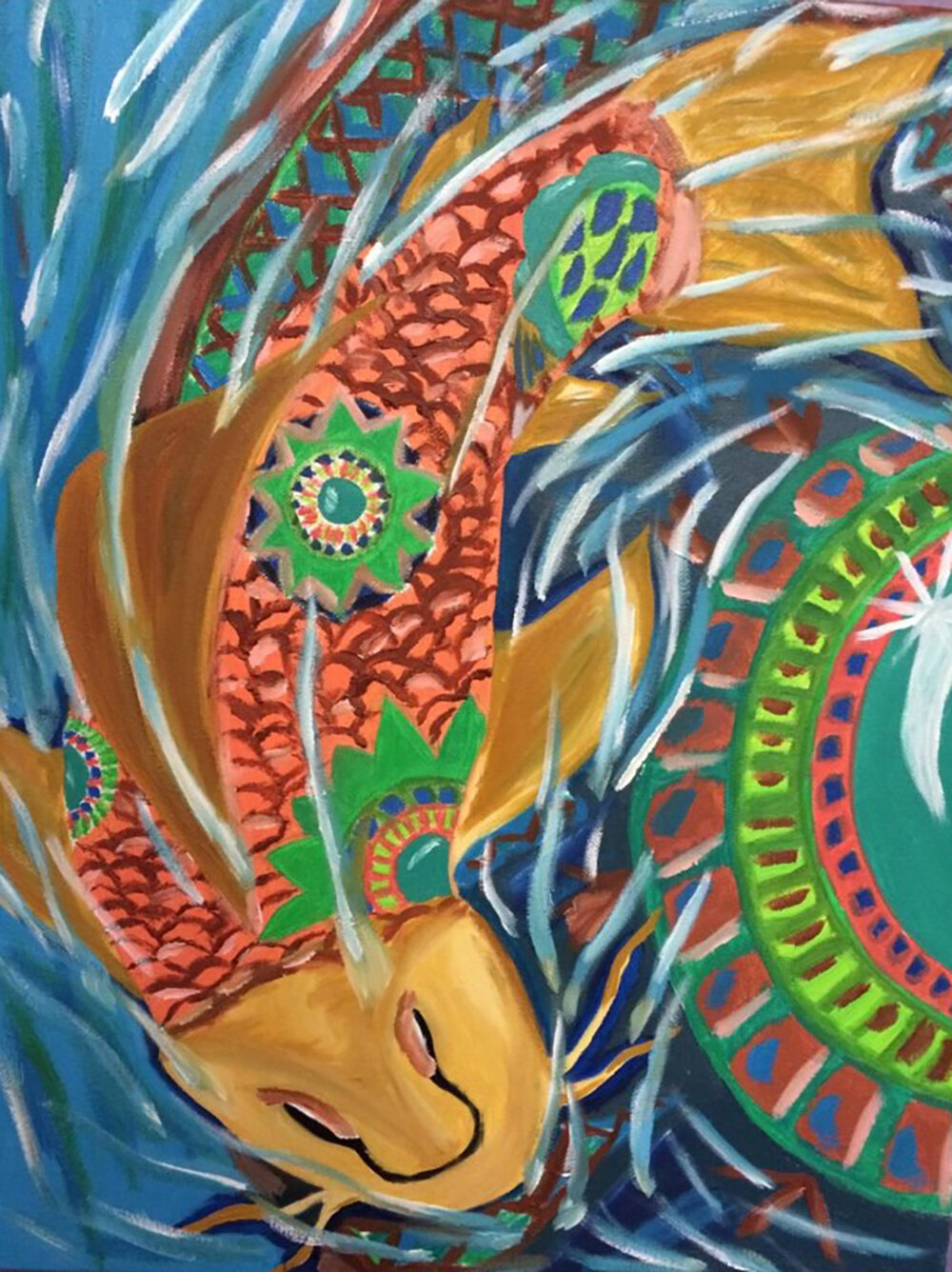P A I N T b r u s h



~
PURPOSE
To EXPERIMENT with BRUSH STROKES
To EXPLORE mixing COLORS
To FEEL the VISCOSITY of paint
To TRY differences in OPACITY and TRANSPARENCY
THE EXERCISE
Explore the feel of liquid media (paint) as an expressive tool for creativity
INSTRUCTIONS
Use water-based tempera or acrylic paint to investigate brush strokes.
Use paper that is of medium to heavy weight with a bit of a textured surface.
Experiment with a variety of brushstrokes.
Try long, short, thick, thin strokes on their own. Try blending areas together. Try overlapping colors to see what will happen. Try adding water or working with a dry brush. Feel how the paint reacts to your brush and your hand.
NOTice
The paint does not have to look like anything. This can be abstract.
Allow yourself to feel how the paint moves on the page.
Remember that throughout the history of art, paint has been used in very different ways. Sometimes it is almost in a paint-by-number method as in ancient frescoes. Other times, during the Renaissance, oil paint is smooth with almost no detectable brushstrokes. And during the emergence of Modernism, artists experimented with brushstrokes as an expressive endpoint in fully abstract paintings.
YOU are THE ARTISAN
TRY SOMETHING NEW - EXPERIMENT WITH THE FEEL OF THE PAINT
EXPLORE THE CHARACTER OF BRUSHSTROKES AND NEW COLOR COMBINATIONS
MAKE SOMETHING WITH INTERESTING ENERGY !!
IMAGINE
What might be ways to hold the brush? How thick should the paint be? How much water should be added?
Find the answers through experimenting with the paint and the paper or canvas you have chosen. Feel how the paint moves across the surface as it releases from the brush. Let this guide you as you try different strokes. Change the angles, the lengths, the curvature, the directions, and the rhythms of the brush strokes to make your own signature…
Remember, there is not a right or wrong way to do this. There are simply better ways as you become comfortable with the paint.
materials
THEMES
This exercise helps us understand differences in media through touch and experiential motion.









